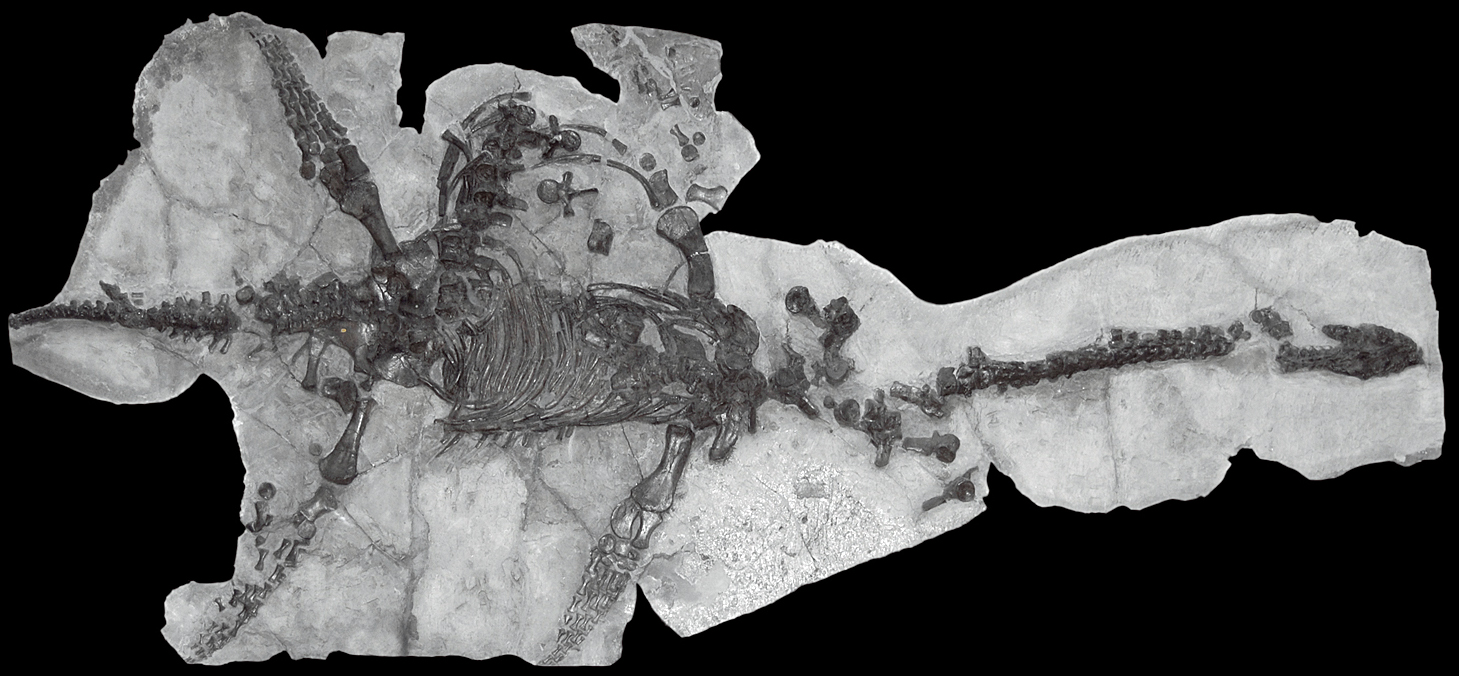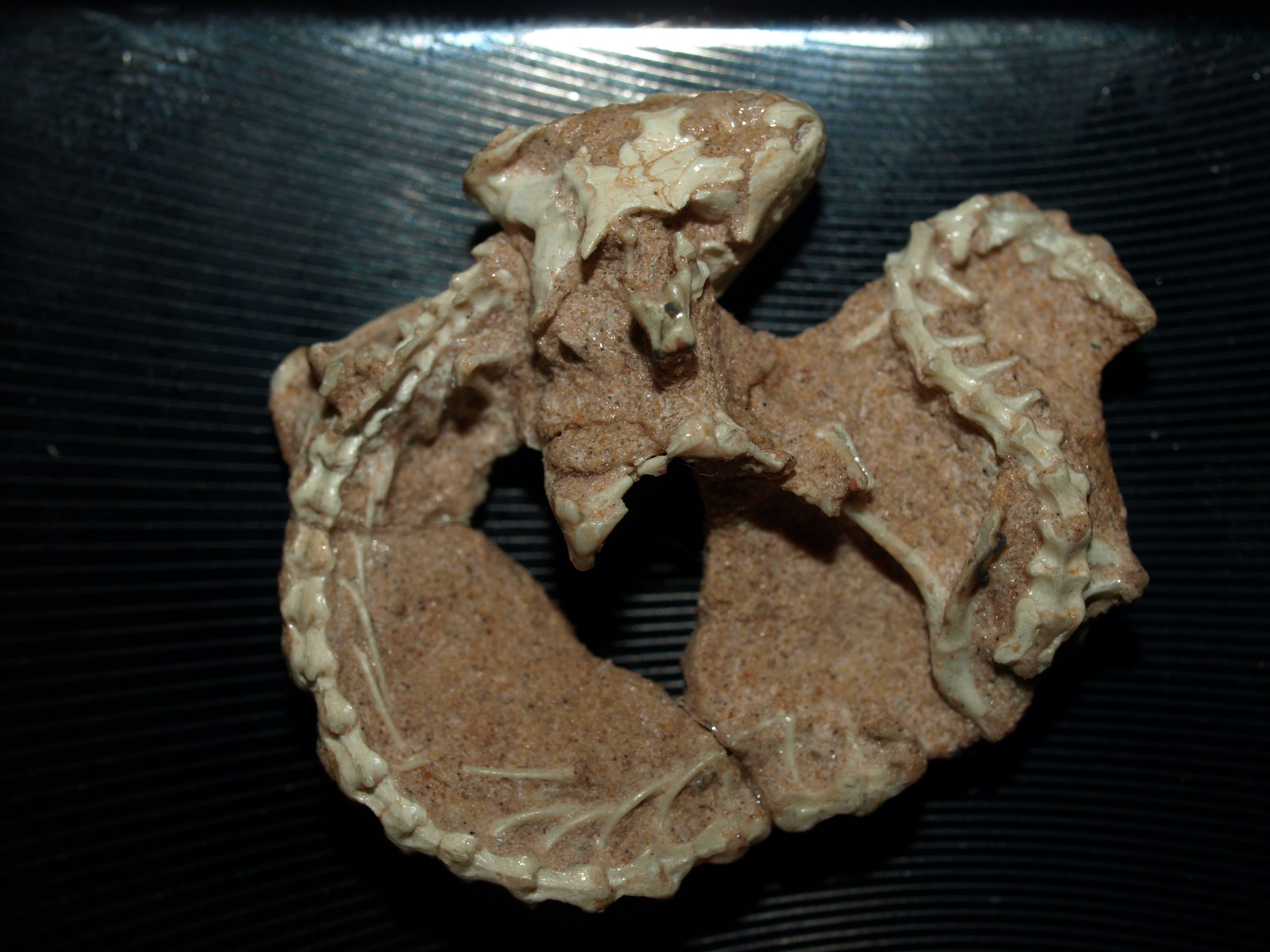|
Ankylopoda
Ankylopoda was a proposed clade that hypothetically contains turtles and lepidosaurs (tuatara, lizards and snakes) and their fossil relatives. This clade was historically supported based on microRNA analysis as well as some cladistic analyses. However, it was strongly contradicted by molecular evidence which supports Archelosauria (the grouping of turtles and archosaurs), and other recent cladistic analyses have supported Archelosauria over Ankylopoda. Classification The cladogram below follows the most likely result found by another analysis of turtle relationships, this one using only fossil evidence, published by Rainer Schoch and Hans-Dieter Sues in 2015. This study found ''Eunotosaurus'' to be an actual early stem-turtle, though other versions of the analysis found weak support for it as a parareptile Parareptilia ("near-reptiles") is an extinct group of Basal (phylogenetics), basal Sauropsida, sauropsids ("Reptile, reptiles"), traditionally considered the sister tax ... [...More Info...] [...Related Items...] OR: [Wikipedia] [Google] [Baidu] |
Pantestudines
Pantestudines or Pan-Testudines is the proposed group of all Reptile, reptiles more closely related to turtles than to any other living animal. It includes both modern turtles (crown group turtles, also known as Testudines) and all of their extinct relatives (also known as Stem-group, stem-turtles). Pantestudines with a complete shell are placed in the clade Testudinata. Classification The identity of the ancestors and closest relatives of the turtle lineage was a longstanding scientific mystery, though new discoveries and better analyses in the early 21st century began to clarify turtle relationships. They had frequently been considered relatives of the Captorhinidae, captorhinids, which also possessed an anapsid skull configuration. Later, the consensus shifted towards Testudinata's placement within Parareptilia, another "anapsid" clade. Analysis of fossil data has shown that turtles are likely diapsid reptiles, most closely related either to the archosaurs (crocodiles, bird, a ... [...More Info...] [...Related Items...] OR: [Wikipedia] [Google] [Baidu] |
Archelosauria
Archelosauria is a clade grouping turtles and archosaurs (birds and crocodilians) and their fossil relatives, to the exclusion of lepidosaurs (the clade containing lizards, snakes and the tuatara). The majority of phylogenetic analyses based on molecular data (e.g. DNA and proteins) have supported a sister-group relationship between turtles and archosaurs. On the other hand, Archelosauria had not been historically supported by most morphological analyses, which have instead found turtles to either be descendants of parareptiles, early-diverging diapsids outside of Sauria, or close relatives of lepidosaurs within the clade Ankylopoda. Some recent morphological analyses have also found support for Archelosauria. Classification Multiple sequence alignments of DNA and protein sequences and phylogenetic inferences have shown that turtles are the closest living relatives to birds and crocodilians. There are about 1000 ultra-conserved elements in the genome that are unique to turtles ... [...More Info...] [...Related Items...] OR: [Wikipedia] [Google] [Baidu] |
Lepidosauromorpha
Lepidosauromorpha (in PhyloCode known as Pan-Lepidosauria) is a group of reptiles comprising all diapsids closer to lizards than to archosaurs (which include crocodiles and birds). The only living sub-group is the Lepidosauria, which contains two subdivisions, Squamata, which contains lizards and snakes, and Rhynchocephalia, the only extant species of which is the tuatara. Lepidosauromorphs are distinguishable from archosauromorphs (reptiles closer to archosaurs) by their primitive sprawling gait (allowing for the same sinusoidal trunk and tail movement seen in fish), the sliding "joint" between the coracoids and the sternum (for a longer stride), and their pleurodont dentition. In contrast, Archosauromorphs possess a parasagittal gait, a reduction in their dermal girdle, a reduction and/or loss of the sternum, and a more thecodont dentition. Living lepidosauromorphs have retained an ectothermic (" cold blooded") metabolism, unlike the ancestral condition in archosauromorp ... [...More Info...] [...Related Items...] OR: [Wikipedia] [Google] [Baidu] |
Placodontia
Placodonts ("Tablet (pharmacy), tablet tooth, teeth") are an Extinction, extinct order (biology), order of marine reptiles that lived during the Triassic period, becoming extinct at the end of the period. They were part of Sauropterygia, the group that includes Plesiosauria, plesiosaurs. Placodonts were generally between in length, with some of the largest measuring long. The first specimen was discovered in 1830. They have been found throughout central Europe, North Africa, the Middle East and China. Palaeobiology The earliest forms, like ''Placodus'', which lived in the early to middle Triassic, resembled barrel-bodied lizards superficially similar to the marine iguana of today, but larger. In contrast to the marine iguana, which feeds on algae, the placodonts ate Mollusca, molluscs and so their teeth were flat and tough to crush shells. In the earliest periods, their size was probably enough to keep away the top sea predators of the time: the sharks. However, as time passe ... [...More Info...] [...Related Items...] OR: [Wikipedia] [Google] [Baidu] |
Eosauropterygia
Sauropterygia ("lizard flippers") is an extinct taxon of diverse, aquatic diapsid reptiles that developed from terrestrial ancestors soon after the end-Permian extinction and flourished during the Triassic before all except for the Plesiosauria became extinct at the end of that period. The plesiosaurs would continue to diversify until the end of the Mesozoic, when they became extinct as part of the end-Cretaceous mass extinction. Sauropterygians are united by a radical adaptation of their pectoral girdle, adapted to support powerful flipper strokes. Some later sauropterygians, such as the pliosaurs, developed a similar mechanism in their pelvis. Other than being diapsids, their affinities to other reptiles have long been contentious. Sometimes suggested to be closely related to turtles, other proposals have considered them most closely related to Lepidosauromorpha or Archosauromorpha, and/or the marine reptile groups Thalattosauria and Ichthyosauromorpha. Origins an ... [...More Info...] [...Related Items...] OR: [Wikipedia] [Google] [Baidu] |
Sauria
Sauria is the clade of diapsids containing the most recent common ancestor of Archosauria (which includes crocodilians and birds) and Lepidosauria (which includes squamates and the tuatara), and all its descendants. Since most molecular phylogenies recover turtles as more closely related to archosaurs than to lepidosaurs as part of Archelosauria, Sauria can be considered the crown group of diapsids, or reptiles in general. Depending on the systematics, Sauria includes all modern reptiles or most of them (including birds, a type of archosaur) as well as various extinct groups. Sauria lies within the larger total group Sauropsida, which also contains various stem-reptiles which are more closely related to reptiles than to mammals. Prior to its modern usage, "Sauria" was used as a name for the suborder occupied by lizards, which before 1800 were considered crocodilians. Systematics Sauria was historically used as a partial equivalent for Squamata (which contains lizards and sna ... [...More Info...] [...Related Items...] OR: [Wikipedia] [Google] [Baidu] |
Early Triassic
The Early Triassic is the first of three epochs of the Triassic Period of the geologic timescale. It spans the time between 251.9 Ma and Ma (million years ago). Rocks from this epoch are collectively known as the Lower Triassic Series, which is a unit in chronostratigraphy. The Early Triassic is the oldest epoch of the Mesozoic Era. It is preceded by the Lopingian Epoch (late Permian, Paleozoic Era) and followed by the Middle Triassic Epoch. The Early Triassic is divided into the Induan and Olenekian ages. The Induan is subdivided into the Griesbachian and Dienerian subages and the Olenekian is subdivided into the Smithian and Spathian subages. The Lower Triassic series is coeval with the Scythian Stage, which is today not included in the official timescales but can be found in older literature. In Europe, most of the Lower Triassic is composed of Buntsandstein, a lithostratigraphic unit of continental red beds. The Early Triassic and partly also the Middle Trias ... [...More Info...] [...Related Items...] OR: [Wikipedia] [Google] [Baidu] |
Squamata
Squamata (, Latin ''squamatus'', 'scaly, having scales') is the largest Order (biology), order of reptiles; most members of which are commonly known as Lizard, lizards, with the group also including Snake, snakes. With over 11,991 species, it is also the second-largest order of Neontology, extant (living) vertebrates, after the Perciformes, perciform fish. Squamates are distinguished by their skins, which bear horny scale (zoology), scales or shields, and must periodically engage in molting. They also possess movable quadrate bones, making possible movement of the Maxilla, upper jaw relative to the neurocranium. This is particularly visible in snakes, which are able to open their mouths very widely to accommodate comparatively large prey. Squamates are the most variably sized living reptiles, ranging from the Sphaerodactylus ariasae, dwarf gecko (''Sphaerodactylus ariasae'') to the reticulated python (''Malayopython reticulatus''). The now-Extinction, extinct mosasaurs reached ... [...More Info...] [...Related Items...] OR: [Wikipedia] [Google] [Baidu] |
Proganochelys
''Proganochelys'' is a genus of extinct, primitive stem-turtle. ''Proganochelys'' was named by Georg Baur in 1887 as the oldest turtle in existence at the time. The name ''Proganochelys'' comes from the Greek language, Greek word ''ganos'' meaning 'brightness', combined with prefix ''pro'', 'before', and Greek language, Greek base ''chelys'' meaning 'turtle'. ''Proganochelys'' is believed to have been around 1 meter in size and herbivorous in nature. ''Proganochelys'' had been known as the most primitive stem-turtle for over a century, until the novel discovery of ''Odontochelys'' in 2008. ''Odontochelys'' and ''Proganochelys'' share unique primitive features that are not found in ''Casichelydia'', such as tooth-like structures on the pterygoid bone, pterygoid and vomer and a plate-like coracoid. ''Proganochelys quenstedtii'' is the only known species of this genus and is among the oldest known Pantestudines, stem-turtle species with a complete shell discovered to date, known fro ... [...More Info...] [...Related Items...] OR: [Wikipedia] [Google] [Baidu] |
Testudinata
Testudinata is the group of all tetrapods with a true turtle shell. It includes both modern turtles (Testudines) and many of their extinct, shelled relatives (stem-turtles), though excluding ''Odontochelys'' and ''Eorhynchochelys,'' which are placed in the more inclusive Pantestudines''.'' History It was first coined as the group containing turtles by Jacob Theodor Klein in 1760. In 1832-1836, Thomas Bell (zoologist), Thomas Bell wrote a book describing the Testudinata, which summarizes all the world's turtles, living and extinct, illustrated by forty plates by Jane S. Bell, James de Carle Sowerby and Edward Lear. It was first defined in the modern sense by Joyce and colleagues in 2004. While the ancestral condition for the clade is thought to be terrestrial, members of the subclade Mesochelydia, which contains almost all known testudinatans from the Jurassic onwards, are thought to be ancestrally aquatic. Classification The cladogram below follows an analysis by Jérémy A ... [...More Info...] [...Related Items...] OR: [Wikipedia] [Google] [Baidu] |
Odontochelys
''Odontochelys semitestacea'' (meaning "toothed turtle with a half-shell") is a Late Triassic relative of turtles. Before ''Pappochelys'' was discovered and ''Eunotosaurus'' was redescribed, ''Odontochelys'' was considered the oldest undisputed member of Pantestudines (i.e. a stem-turtle). It is the only known species in the genus ''Odontochelys'' and the family Odontochelyidae. Discovery ''Odontochelys semitestacea'' was first described from three 220-million-year-old specimens excavated in Triassic deposits in Guizhou, China. The locale of its discovery at one time was the Nanpanjiang Trough basin, a shallow marine environment surrounded on three sides by land. These deposits preserve an ecosystem known as the Guanling biota, which was dominated by marine reptiles. Description ''Odontochelys'' differed grossly from modern turtles. Modern turtles have a horny beak without teeth in their mouth. In contrast, ''Odontochelys'' fossils were found to have had teeth embedded in thei ... [...More Info...] [...Related Items...] OR: [Wikipedia] [Google] [Baidu] |







